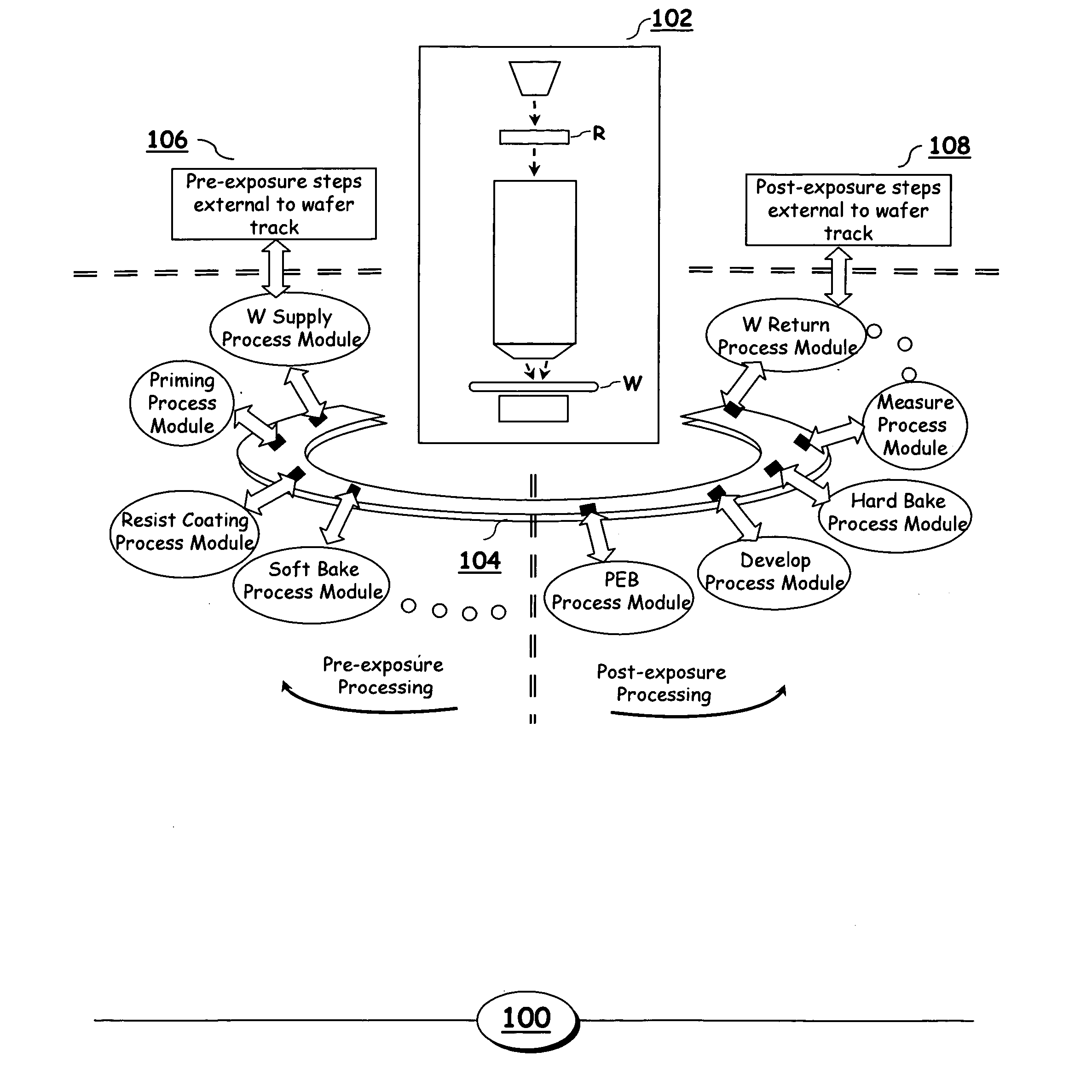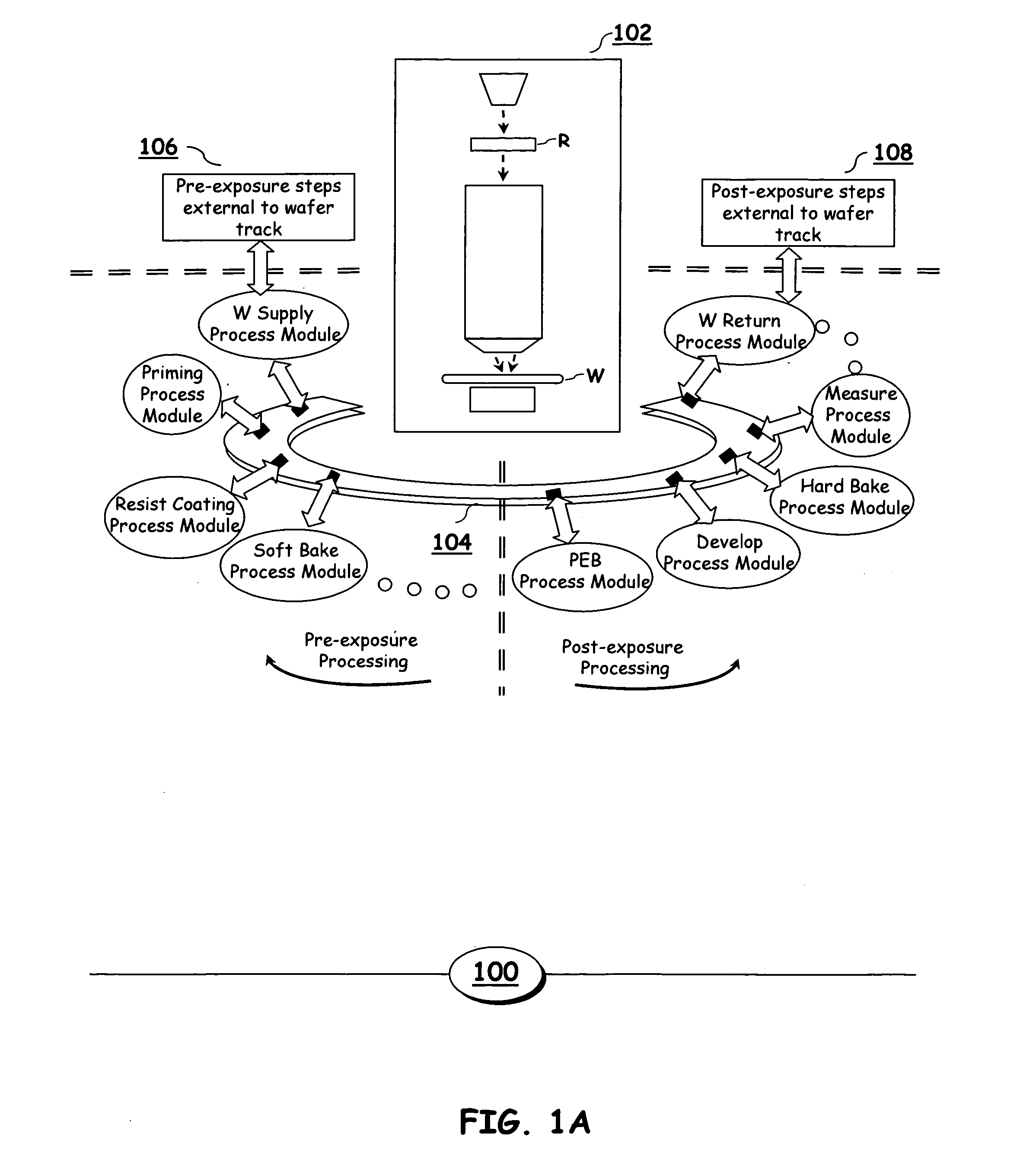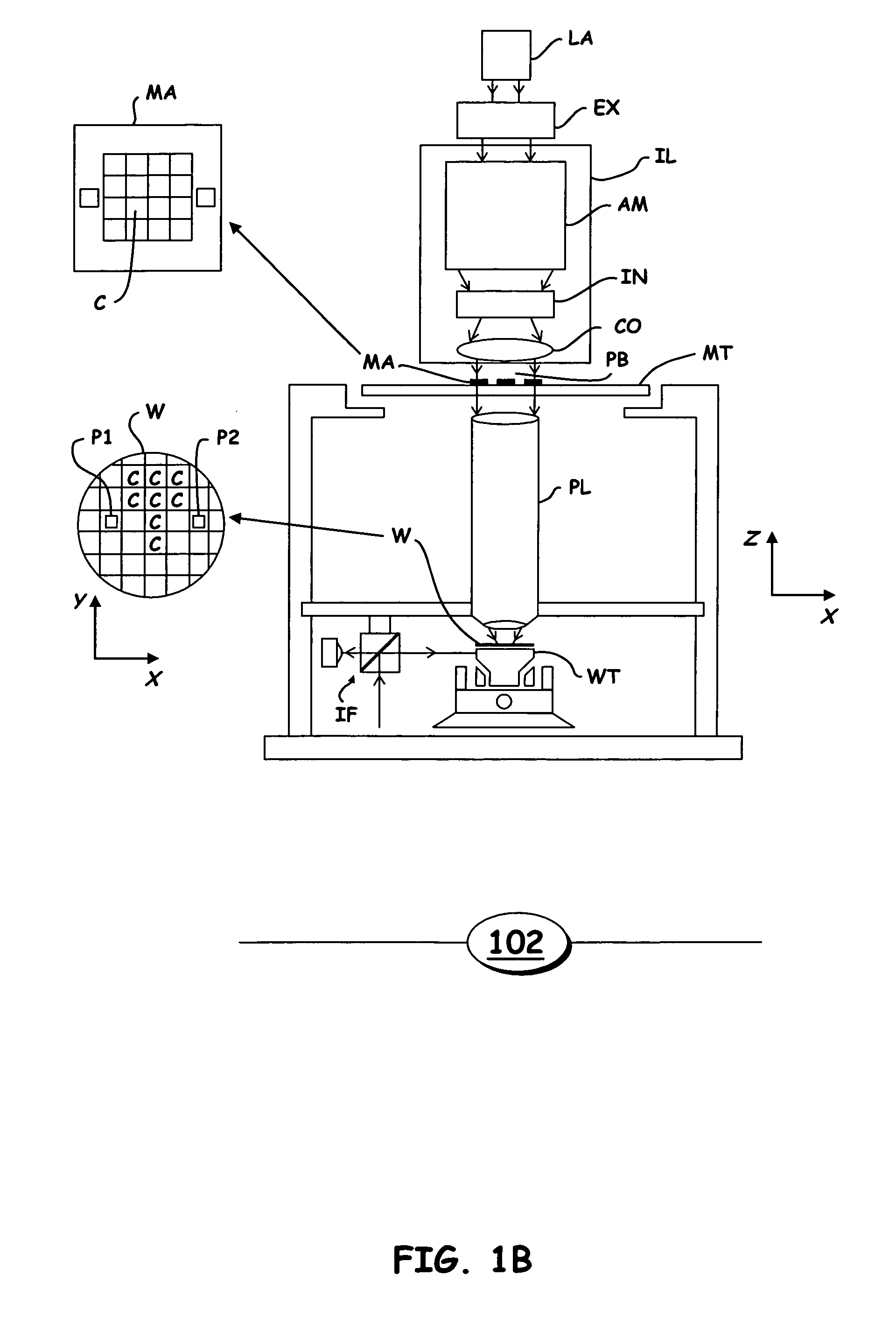Adaptive lithographic critical dimension enhancement
a critical dimension and enhancement technology, applied in the field of lithographic system and method of lithographic exposure, can solve the problems of loss of yield, cd uniformity, affecting critical dimension uniformity, etc., and achieve the effect of improving cd uniformity
- Summary
- Abstract
- Description
- Claims
- Application Information
AI Technical Summary
Benefits of technology
Problems solved by technology
Method used
Image
Examples
Embodiment Construction
[0033] As noted above, processes that treat the substrate wafers contribute to variations in CDU that negatively affect the quality and performance of the exposed patterns. Such non-uniformities may occur across a target field, across a wafer, and between wafers. Moreover, these non-uniformities can also vary depending a variety of factors, such as the particular path the substrate wafer travels, scheduling anomalies, etc. As described in greater detail below, the present invention contemplates a lithographic system that employs an adaptive CD enhancement process whereby these variations and non-uniformities are factored out to provide acceptable CDU levels. Such a process exploits information regarding the lithographic system, for example, wafer track processing data, metrology data, and / or substrate wafer history data, to iteratively arrive at and maintain the optimal corrective dose offsets that improve overall CDU performance.
[0034]FIG. 1A schematically depicts lithographic sys...
PUM
| Property | Measurement | Unit |
|---|---|---|
| transmission | aaaaa | aaaaa |
| reflection | aaaaa | aaaaa |
| time | aaaaa | aaaaa |
Abstract
Description
Claims
Application Information
 Login to View More
Login to View More - R&D
- Intellectual Property
- Life Sciences
- Materials
- Tech Scout
- Unparalleled Data Quality
- Higher Quality Content
- 60% Fewer Hallucinations
Browse by: Latest US Patents, China's latest patents, Technical Efficacy Thesaurus, Application Domain, Technology Topic, Popular Technical Reports.
© 2025 PatSnap. All rights reserved.Legal|Privacy policy|Modern Slavery Act Transparency Statement|Sitemap|About US| Contact US: help@patsnap.com



